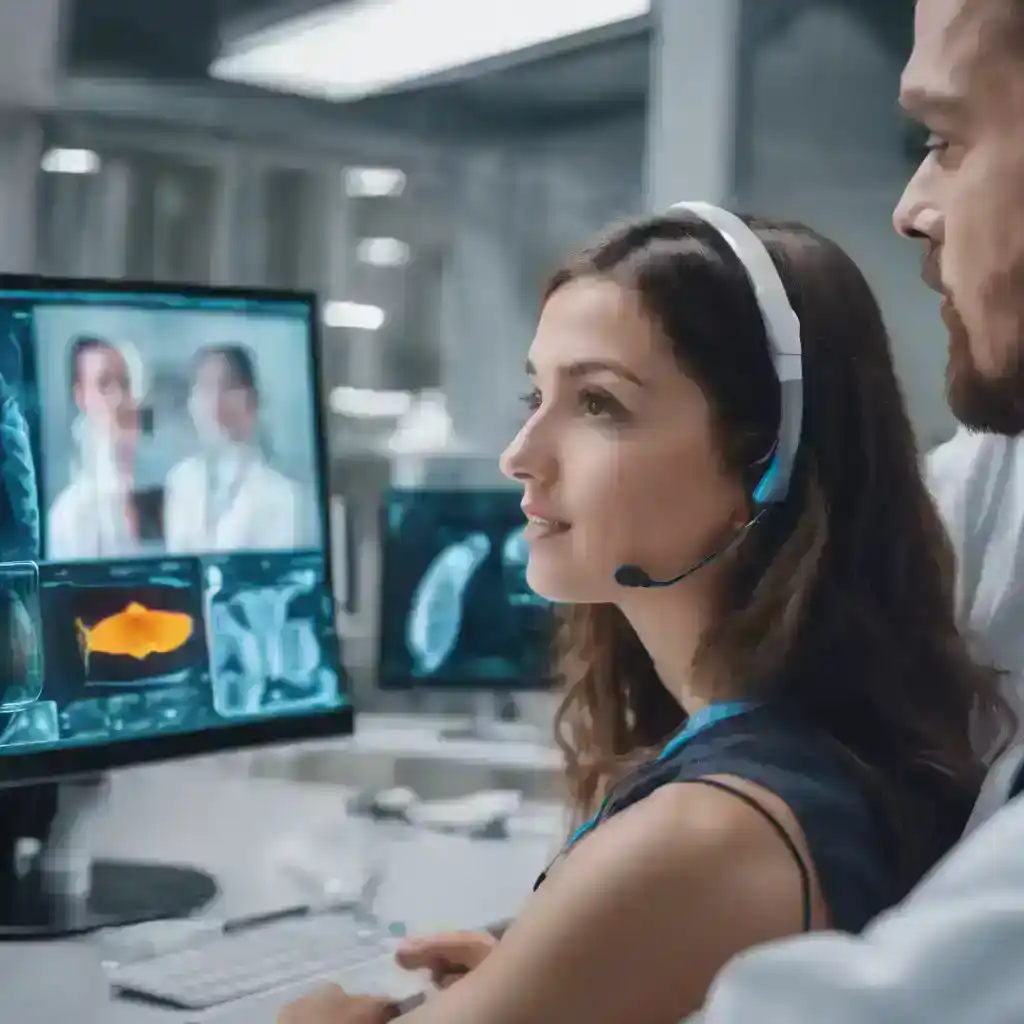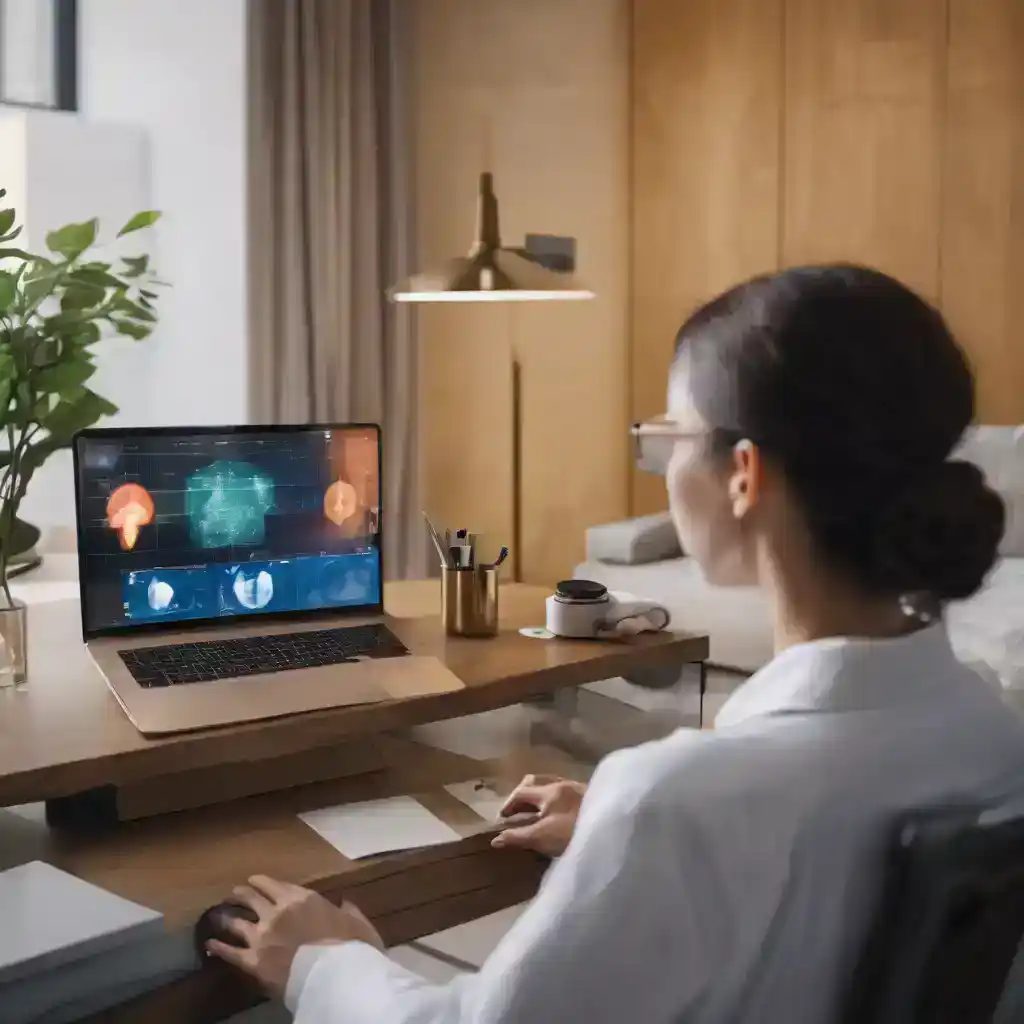Table of Contents
Telemedicine is changing the healthcare industry completely in 2025
This evolution has fundamentally altered the landscape of medical care, changing how patients access health services and how medical professionals deliver them.
Telemedicine, often synonymous with telehealth, leverages the power of digital communication technologies to offer remote healthcare services.
This approach has broken down traditional barriers, enabling patients in remote or underserved areas to receive timely medical care.
Moreover, it offers convenience for those who might face challenges in accessing traditional in-person healthcare services due to mobility issues, time constraints, or other factors.
The utilization of various platforms, ranging from video conferencing to mobile health apps, has made healthcare more accessible and user-friendly.
Over the years, the telemedicine field has experienced a series of remarkable advancements, greatly enhancing its impact and reach.
These developments have significantly improved patient outcomes by facilitating quicker access to medical care, enabling more frequent monitoring of chronic conditions, and allowing for prompt responses to health issues.
The integration of advanced technologies like artificial intelligence and remote patient monitoring systems has further propelled the efficiency and effectiveness of telehealth services.

1. The Early Days of Telemedicine
The roots of telemedicine can be traced back to the mid-20th century when the world of telecommunications was just beginning to develop.
Initially, telemedicine’s primary focus was on transmitting radiographic images and facilitating consultations via early forms of audio and video communication.
This era marked the first steps toward remote healthcare, a concept that was revolutionary for its time.
Despite these initial efforts, several challenges impeded the widespread adoption of telemedicine.
The technology of that era was limited, offering only basic functionalities, which were often unreliable and of low quality.
People in healthcare, including patients, were slow to try these new methods.
They weren’t familiar with them, and there weren’t strong systems to support them.
2. Technological Leap and the Internet Era
The field of telemedicine underwent a significant transformation with the advent of the internet.
The rise of fast internet and better video tools helped telehealth grow quickly.
These changes built a strong base for expanding care from a distance.
This period saw the ability of healthcare professionals to conduct real-time audio and video consultations, a giant leap forward in medical care.
These advancements helped doctors diagnose and treat people in remote areas.
They solved one of healthcare’s biggest problems—limited access.
As internet use grew and tech improved, telemedicine became more common.
This started a new phase in how healthcare is delivered.
3. Mobile Health Apps and Wearables
The proliferation of smartphones opened a new chapter in the telemedicine narrative.
The healthcare sector quickly adapted to this change by embracing mobile health applications and wearable devices.
These innovations extended the scope of telemedicine beyond traditional video consultations.
Patients were now empowered to monitor their health through these devices actively, This marked a shift towards a more proactive and patient-centered approach to healthcare, making it more personalized and accessible.
These tools allowed for the continuous tracking of vital signs, management of chronic conditions, and real-time communication with healthcare providers.
This marked a shift towards a more proactive and patient-centered approach to healthcare, making it more personalized and accessible.
Imagine a patient diagnosed with a chronic condition such as diabetes. The healthcare provider prescribes a mobile health app designed for diabetes management, which the patient downloads on their smartphone.
This app allows the patient to monitor their blood glucose levels, track medication adherence, refill Zepbound prescriptions online, and record lifestyle factors like diet and exercise.
Additionally, the patient is provided with a wearable device, such as a smartwatch with health-tracking capabilities. The smartwatch continuously monitors the patient’s vital signs, including heart rate and physical activity levels.
Through telemedicine, the patient can share this data securely with their healthcare provider.
The provider, remotely accessing the information, can offer personalized insights, adjust medications, or provide lifestyle recommendations during virtual consultations.
This integration exemplifies how technology, in the form of mobile health apps and wearables, can play a crucial role in telemedicine, offering a holistic and patient-centered approach to healthcare management.
4. Remote Patient Monitoring
The development of remote patient monitoring (RPM) systems represents a significant advancement in telemedicine.
RPM systems enable the real-time tracking of a patient’s health data, such as heart rate, blood pressure, and glucose levels, providing a continuous overview of the patient’s health.
This technology is particularly beneficial for individuals with chronic conditions, offering them and their healthcare providers a powerful tool for early intervention and ongoing management.
Furthermore, RPM provides patients with a sense of security and empowerment, knowing that their health is being monitored regularly, which can lead to better health outcomes and peace of mind.
5. Artificial Intelligence (AI) in Telemedicine

The integration of artificial intelligence into telemedicine has opened new horizons in healthcare.
AI’s ability to analyze vast amounts of data, including medical images, and to predict health trends based on historical data, has significantly improved diagnostic accuracy and the efficiency of the healthcare process.
This fusion of technology and healthcare is not just a step forward; it represents a leap into a future where decision-making is faster, more accurate, and more patient-centric.
AI tools in telemedicine are not only enhancing the quality of care but are also paving the way for innovations in personalized medicine and patient care.
6. Telepsychiatry and Mental Health Services
Telemedicine has had a profound impact on mental health services, particularly through the advent of telepsychiatry.
The availability of virtual consultations has greatly reduced the barriers to accessing mental health care, making it more accessible to those who might otherwise avoid or be unable to seek help, such as teens needing treatment for depression.
This development is significant in the context of global mental health concerns, as it offers a more flexible and less intimidating approach to mental health care.
Telepsychiatry has been particularly beneficial during times of crisis or in areas with limited access to mental health professionals, demonstrating the versatility and vital role of telemedicine in mental health care.
7. Blockchain Technology for Data Security
The integration of blockchain technology in telemedicine represents a critical step in addressing one of the most significant concerns in healthcare: data security and privacy.
Blockchain’s decentralized and transparent nature offers a robust solution to the challenges of data security in telemedicine.
By ensuring the integrity and security of health records, blockchain technology not only enhances the trust in telemedicine services among healthcare providers and patients but also paves the way for more secure and efficient handling of sensitive medical data.
This advancement is crucial in an era where data breaches are a significant concern, ensuring patient confidentiality and trust in the digital healthcare system.
In a telemedicine system, patient Electronic Health Records (EHRs) are crucial for providing accurate and comprehensive healthcare.
Blockchain technology can be employed to secure and manage EHRs in a decentralized and transparent manner.
Each patient’s health information, including medical history, diagnostic reports, and treatment plans, is stored in a secure and tamper-resistant blockchain.
The decentralized nature of blockchain ensures that no single entity has control over the entire network, reducing the risk of unauthorized access or data manipulation.
8. The Role of 5G Technology
The introduction of 5G technology has been a game-changer for telemedicine.
With its high bandwidth and low latency, 5G has the potential to significantly improve the telemedicine experience, making it more efficient and effective.
This is particularly important for applications that require real-time data transfer and communication, such as telesurgery and other advanced telehealth services.
The enhanced capabilities brought about by 5G technology are not just incremental improvements; they represent a significant leap forward in making telemedicine a more viable and versatile option for a wide range of medical services.
9. Challenges and Opportunities
Despite its remarkable progress, telemedicine still faces several challenges that must be addressed. Issues such as regulatory compliance, reimbursement policies, and the digital divide present significant hurdles in the widespread adoption of telemedicine. However, these challenges also offer opportunities for innovation and collaboration among policymakers, healthcare providers, and technology developers.
Addressing these issues is crucial for the continued growth and evolution of telemedicine, ensuring that it reaches its full potential in improving healthcare access and quality. The future of telemedicine is bright, but realizing its full potential will require concerted efforts to overcome these challenges and harness the opportunities they present.
Conclusion
The evolution of healthcare, from its humble beginnings to a sophisticated and indispensable aspect of modernity, underscores the pivotal role of telemedicine in shaping the future of medical services.
Ongoing technological advancements and the increasing acceptance of remote healthcare position telemedicine as a key player in healthcare delivery.
Navigating constant change, telemedicine stands as a beacon of innovation, offering a glimpse into a future where healthcare seamlessly integrates into our daily lives.
This revolutionary progress signifies a paradigm shift, promising a healthcare landscape where accessibility is coupled with a natural connection to our daily routines.
In this transformative narrative, telemedicine is more than a service—it’s an integral thread woven into the fabric of our existence. The commitment to advancing health is evident in innovative strides, ensuring that quality care effortlessly becomes part of the evolving rhythm of our society.
As we move into the digital age, technology becomes more than just a fix for healthcare problems.
It sparks a shift toward better, more personal, and more open care for all.
This change reflects our shared goal of building a healthier and more connected world.
At its heart, this journey shows how healthcare is growing — and how people keep pushing forward, even as health needs change.
.